Overview
The article titled “10 Steps for Recruiting and Nominating Candidates Effectively” presents a systematic approach designed to enhance the recruitment process through ten pivotal strategies. Each step, ranging from defining clear position descriptions to implementing ongoing evaluations, underscores the significance of inclusivity, transparency, and structured engagement. This framework is essential for attracting and retaining diverse talent effectively. By following these strategies, union leadership can navigate the complexities of recruitment with confidence and clarity.
Introduction
In a landscape where effective candidate recruitment can make or break an organization, the need for streamlined processes has never been more crucial. This article delves into ten strategic steps designed to enhance the recruitment and nomination of candidates, from leveraging secure online voting systems to fostering diverse search committees.
However, as organizations strive to attract top talent, the challenge remains: how can they ensure that every voice is heard and every candidate is evaluated fairly?
Exploring these steps provides a roadmap to not only improve recruitment practices but also to cultivate a more inclusive and effective hiring environment.
Votem: Streamline Candidate Recruitment with Secure Online Voting
Votem’s CastIron platform provides a that enhances the process of recruiting and nominating candidates. By enabling stakeholders to vote remotely and securely, organizations can significantly enhance participation and transparency in the process of recruiting and nominating candidates. This capability is especially advantageous for unions and associations, where member engagement is paramount. Moreover, the platform’s strict adherence to regulations ensures that the voting system is not only secure but also legally valid, thereby fostering trust among participants.
Utilizing Votem can lead to increased voter participation, as members can effortlessly cast their votes from any location. This convenience simplifies the enrollment process and promotes inclusivity, making it easier for all members to engage in the democratic process. By embracing Votem, union leadership can transform their processes for recruiting and nominating candidates, ensuring that every voice is heard and valued.
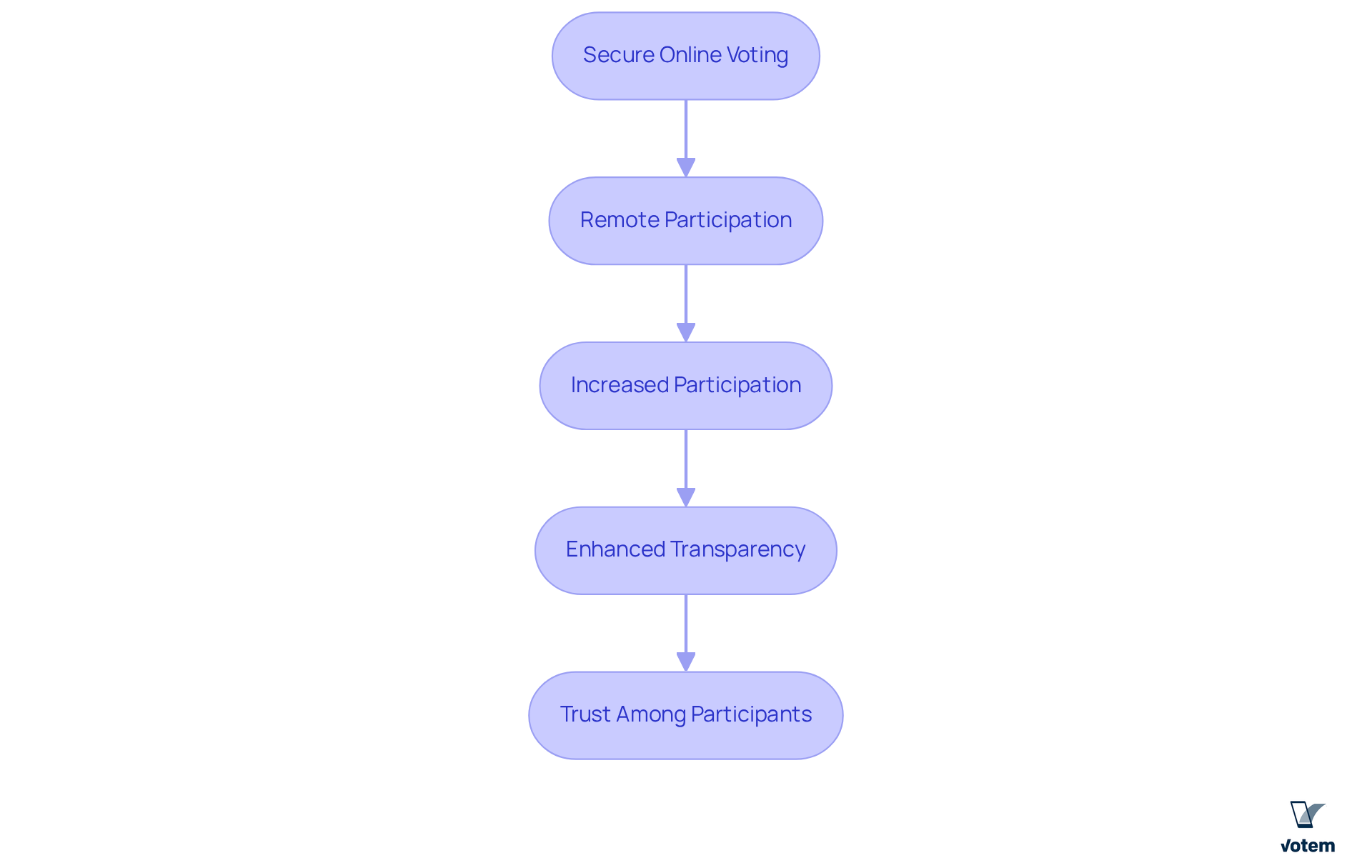
Define Position Descriptions: Clarify Candidate Roles and Responsibilities
Defining clear position descriptions is a foundational step in the recruitment process. Each description should outline specific responsibilities, required skills, and qualifications necessary for the role. This clarity not only attracts appropriate applicants but also establishes a framework for performance expectations.
Incorporating elements such as:
- Job title
- Summary
- Essential duties
- Qualifications
enables applicants to evaluate their fit for the role. Furthermore, regularly updating these descriptions ensures they reflect current organizational needs and market conditions, making them more effective in attracting top talent.
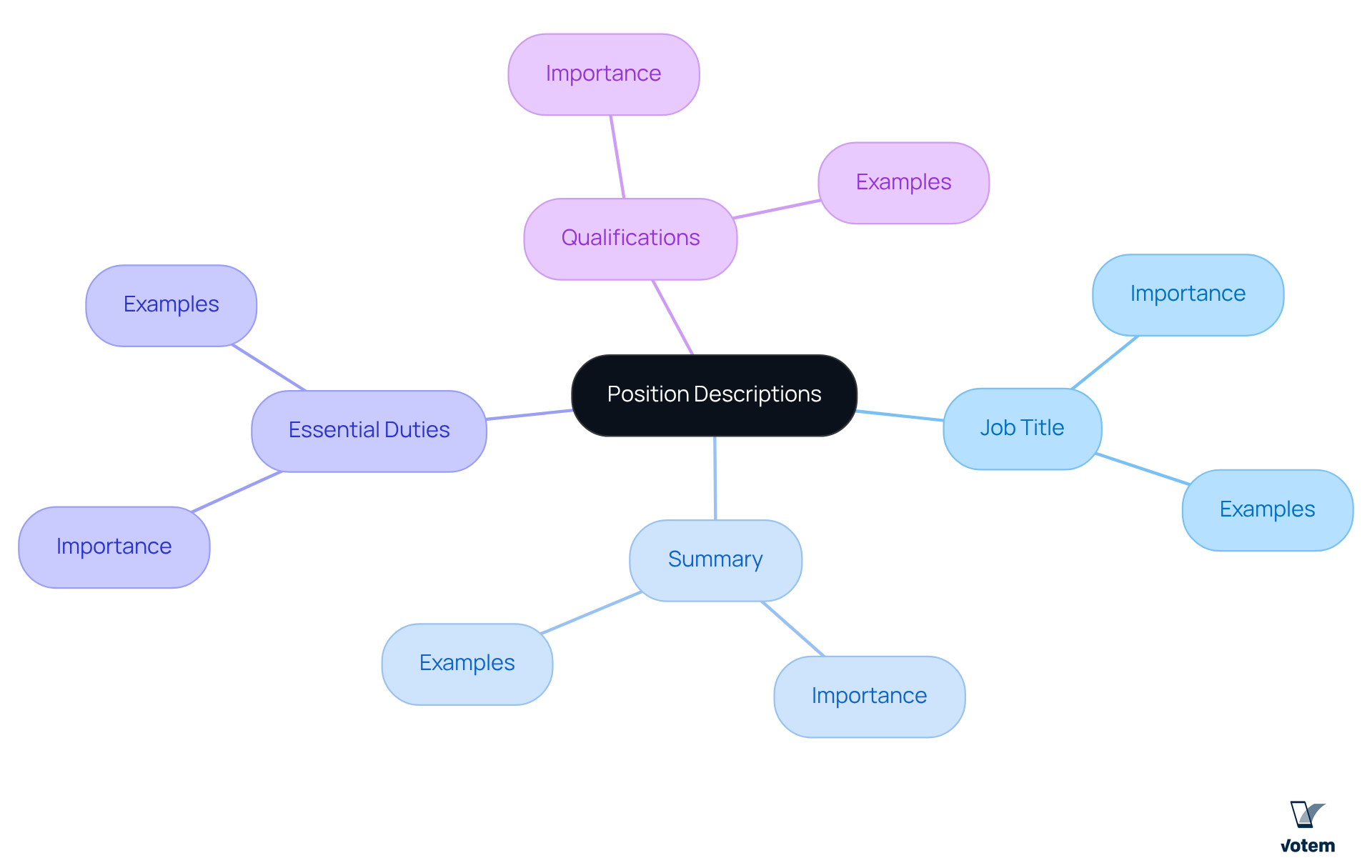
Assemble a Diverse Search Committee: Enhance Representation and Insight
Establishing a varied search committee is crucial for enhancing representation and understanding during the recruitment phase. A committee that embodies diverse backgrounds, experiences, and viewpoints is better equipped to evaluate applicants and make informed decisions. Furthermore, this diversity not only enriches the selection process but also signals to applicants that the organization prioritizes inclusivity and equity.
To cultivate a diverse committee, it is essential to include members from various departments, levels of experience, and demographic backgrounds. In addition, this approach not only improves the selection process but also reinforces the entity’s commitment to fostering an inclusive environment. By taking these steps, organizations can effectively demonstrate their dedication to equity, ultimately attracting a broader pool of talent.
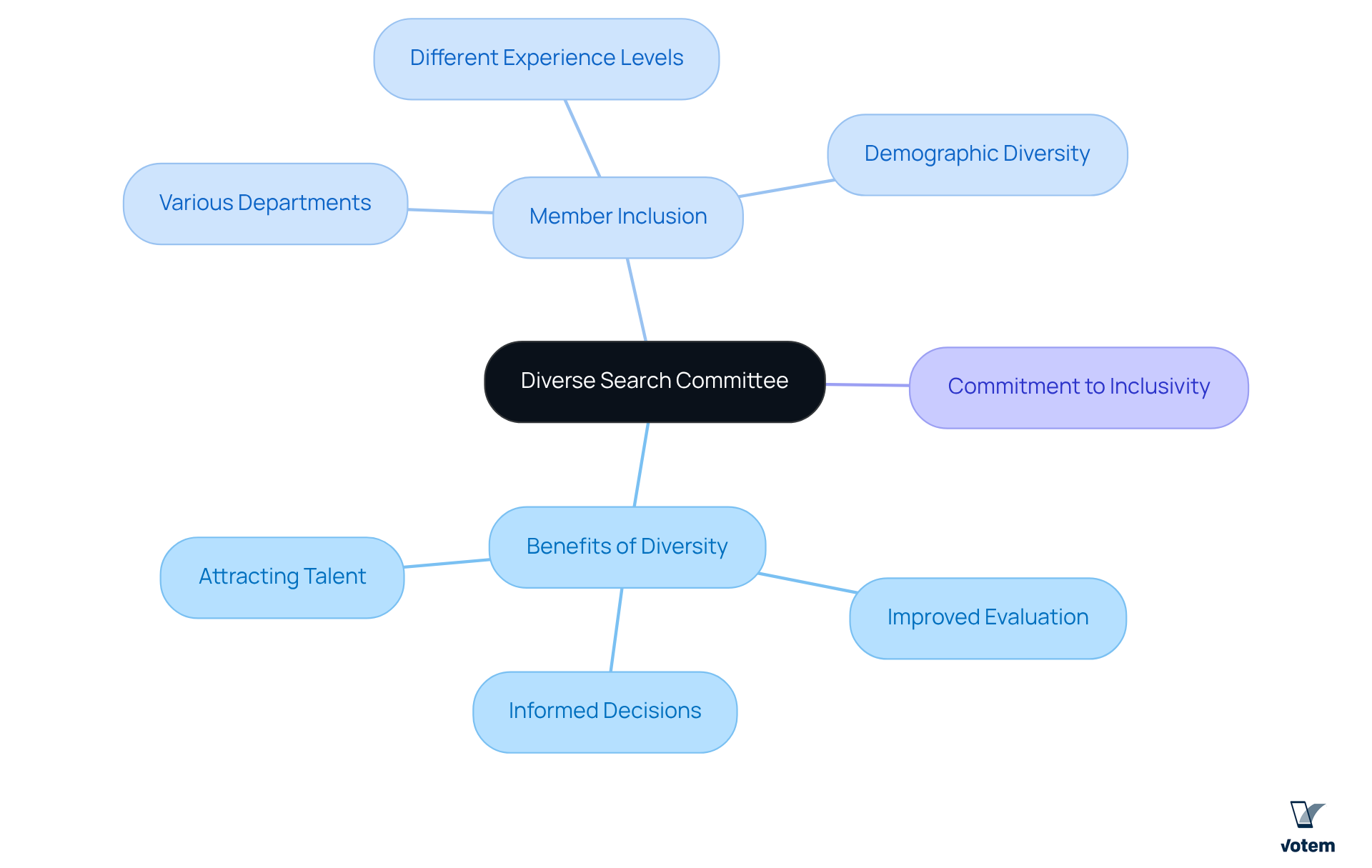
Develop a Broad Candidate Pool: Attract Diverse Talent for Nominations
Developing a broad candidate pool is essential for attracting diverse talent for nominations. This can be accomplished through various strategies, including , attending job fairs, and collaborating with organizations that focus on diversity.
- Leverage Social Media: Utilize platforms like LinkedIn and Instagram to promote job openings and showcase the organization’s commitment to diversity. Engaging content, such as employee testimonials and insights into company culture, significantly enhances visibility and attracts a wider audience. Notably, 84% of companies utilize social media for hiring purposes, underscoring its effectiveness in connecting with potential applicants.
- Attend Job Fairs: Participating in job fairs enables unions to connect directly with prospective applicants, particularly those from underrepresented groups. This face-to-face interaction fosters relationships and encourages applications.
- Partner with Diversity-Focused Organizations: Collaborating with organizations that prioritize diversity allows unions to tap into new talent pools. Such partnerships enhance outreach and provide access to individuals who may not be reached through conventional recruitment techniques. Employers are increasingly adopting social hiring to engage with passive job seekers and access a larger candidate pool.
- Create Inclusive Job Postings: Craft job descriptions that emphasize the organization’s dedication to diversity and inclusion. Highlighting flexible work arrangements and supportive environments attracts a broader range of applicants. Studies indicate that 57% of job applicants believe anonymized hiring enhances their confidence in a just selection method, emphasizing the importance of inclusivity in job advertisements.
- Engage with Community Organizations and Educational Institutions: Building relationships with local community groups and schools aids in identifying and nurturing underrepresented talent. This proactive approach ensures a more thorough selection process and encourages a varied applicant pipeline.
By employing these strategies, unions can enhance their efforts in recruiting and nominating candidates, leading to a more inclusive and effective nomination approach. For instance, initiating a focused social media effort that showcases success stories from diverse employees can further engage potential applicants and illustrate the organization’s commitment to diversity.
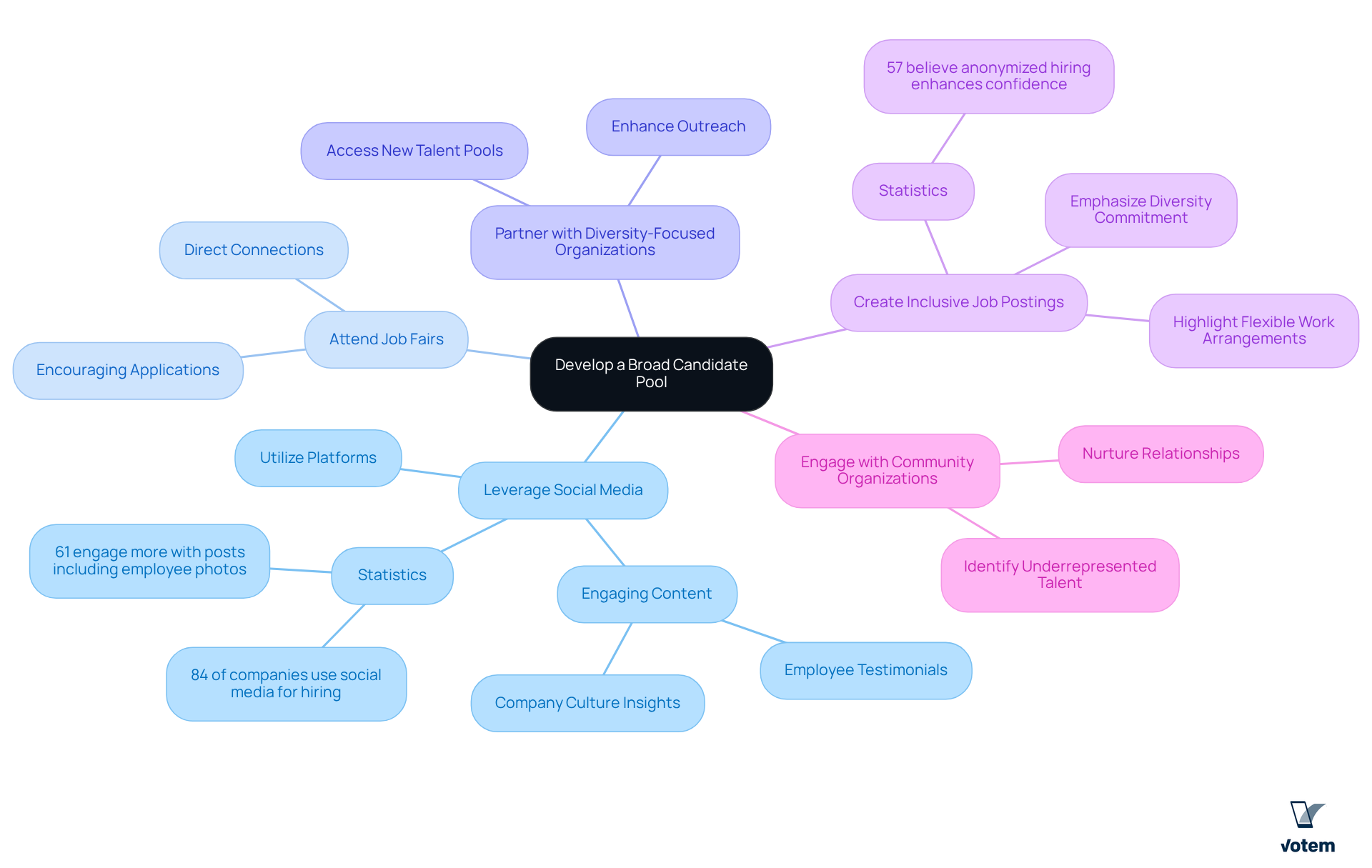
Establish Evaluation Criteria: Ensure Objective Candidate Assessment
Establishing clear evaluation criteria is vital for ensuring an objective applicant assessment process. These criteria should be based on the essential skills and qualifications outlined in the position descriptions. Furthermore, utilizing a standardized scoring system can assist interviewers in assessing applicants consistently. This method not only reduces biases but also guarantees that all applicants are according to their qualifications. In addition, regularly reviewing and updating these criteria can help align them with evolving organizational needs.
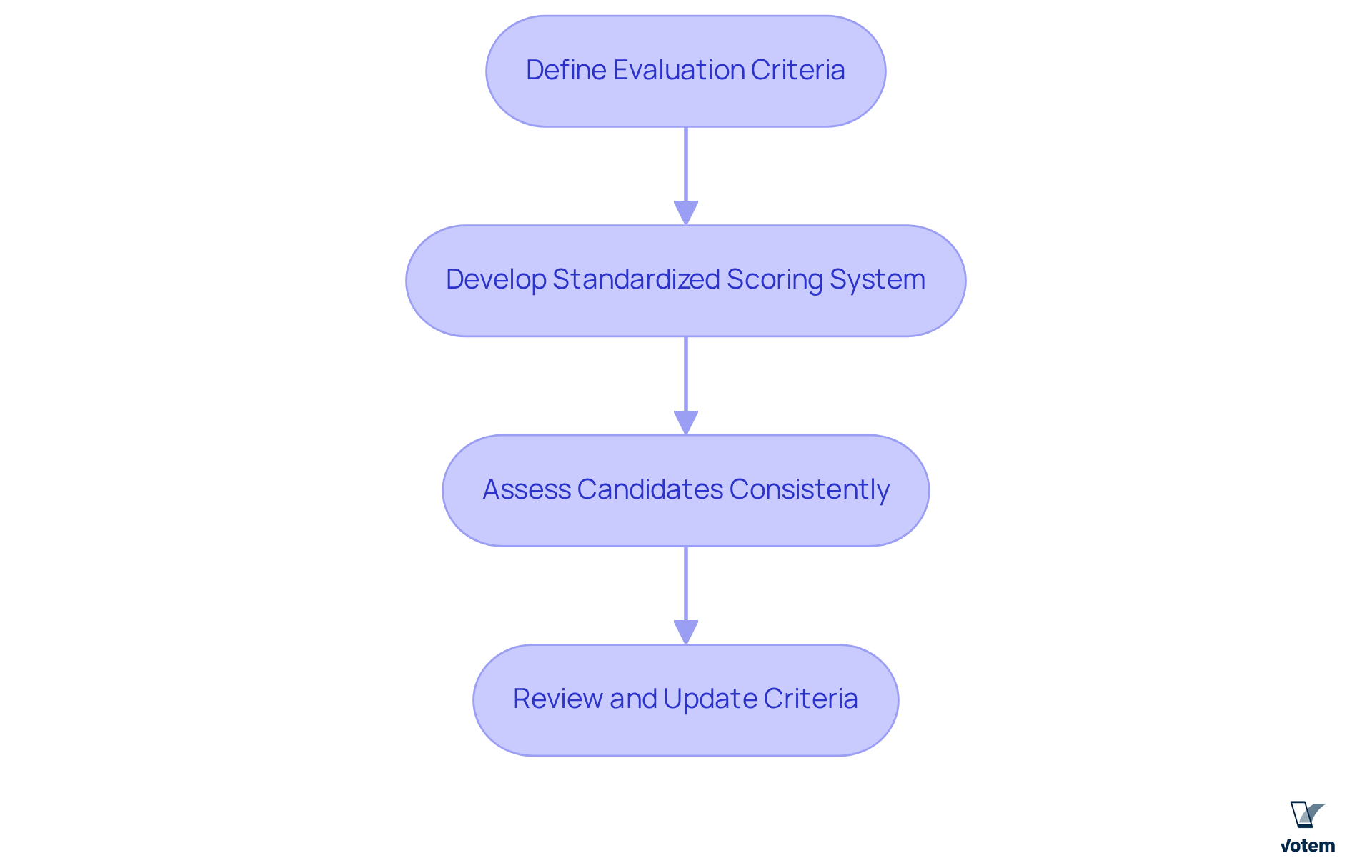
Conduct Comprehensive Interviews: Assess Candidate Fit and Competence
Conducting thorough interviews is essential for evaluating both applicant fit and competence. To achieve this, interviews should be meticulously organized, incorporating behavioral and situational inquiries that allow applicants to effectively showcase their abilities and experiences.
Furthermore, including diverse interview panels can provide varied perspectives on applicants, thereby enhancing the evaluation process. By offering applicants a clear understanding of the interview structure and expectations, you facilitate their preparation, leading to more fruitful conversations.
This approach not only improves the quality of the interviews but also fosters a more inclusive environment that values diverse insights.
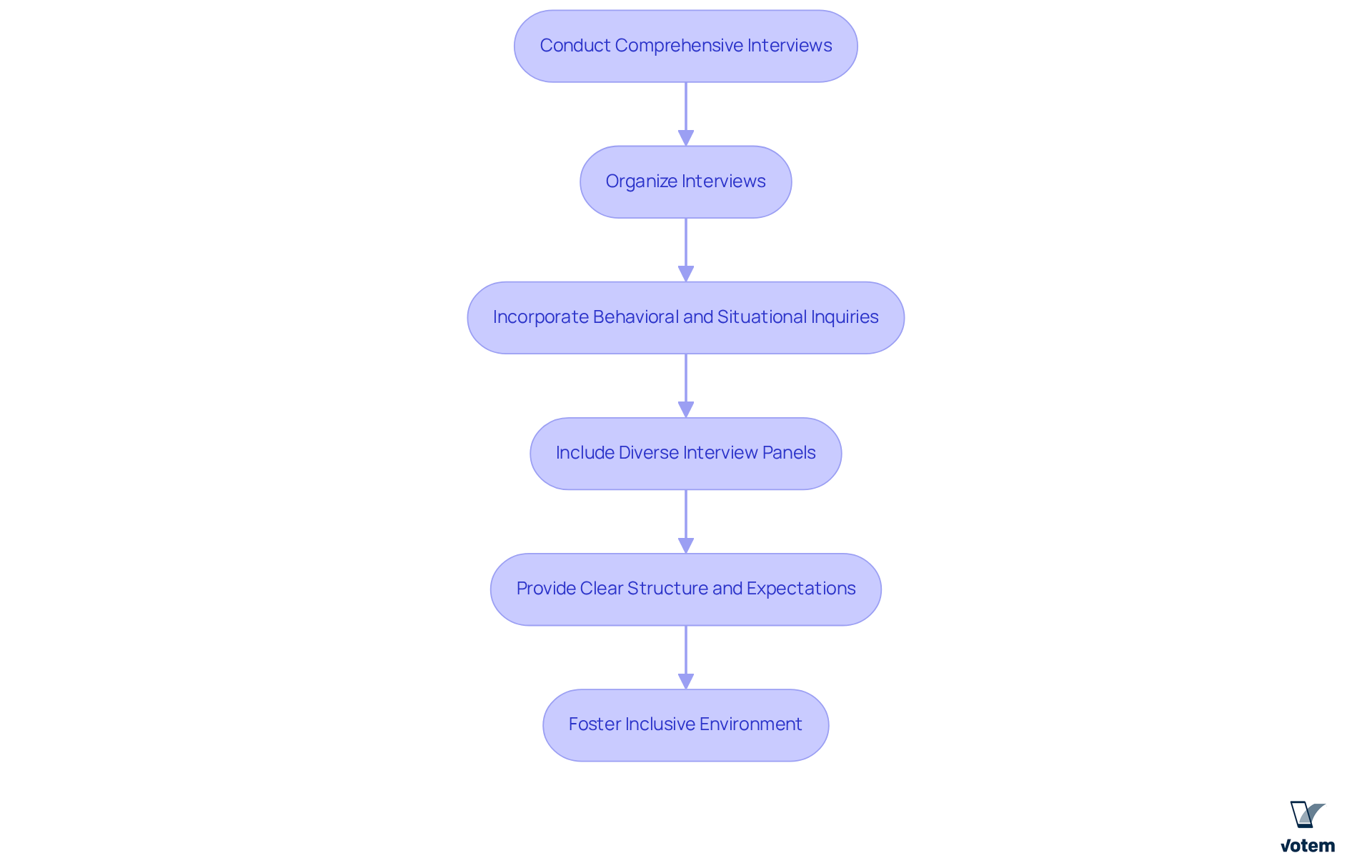
Plan Candidate Engagement Activities: Foster Connections and Insights
Organizing participant engagement activities is crucial for fostering connections and insights during the recruiting and nominating candidates process. Activities such as:
- Informational interviews
- Networking events
- Q&A sessions
not only provide individuals with a profound understanding of the organization and its culture but also facilitate meaningful interactions. These engagements empower applicants to pose questions and express their interests, thereby assisting both parties in .
Furthermore, early engagement in recruiting and nominating candidates significantly enhances their experience and increases the likelihood of accepting an offer when presented. By prioritizing these activities, organizations can create a more inviting atmosphere that encourages candidates to envision their future within the company.
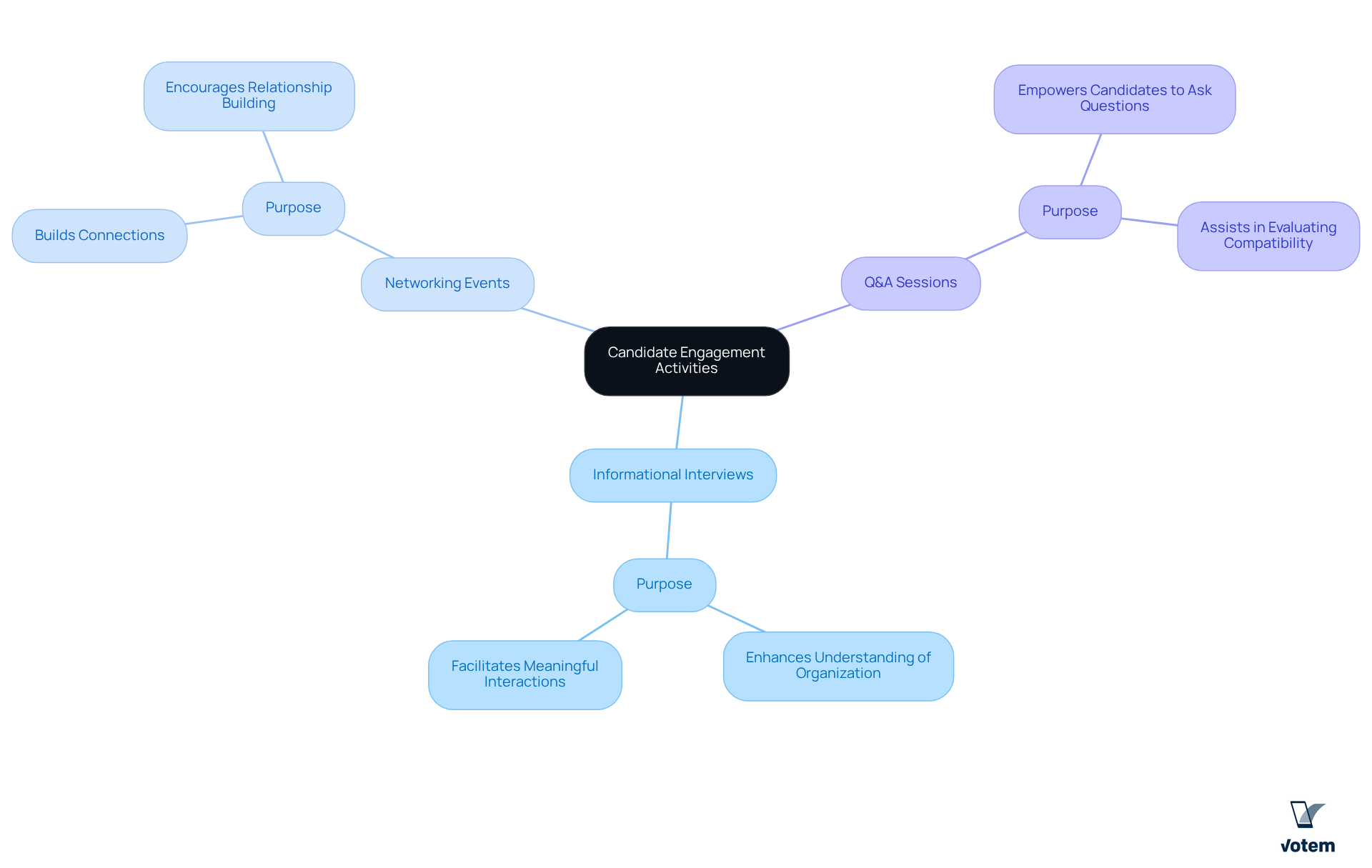
Make Informed Offers: Attract Top Candidates with Clear Terms
Making informed proposals is essential for attracting top-tier applicants. Offers must clearly delineate compensation, benefits, and any other pertinent terms of employment. This transparency not only empowers individuals to make informed decisions but also fosters trust between the company and the applicant.
Furthermore, by considering the specific needs and preferences of candidates when crafting offers, organizations can significantly enhance their appeal and increase acceptance rates. This tailored approach not only demonstrates a commitment to understanding individual priorities but also positions the company as an attractive choice in a competitive job market.
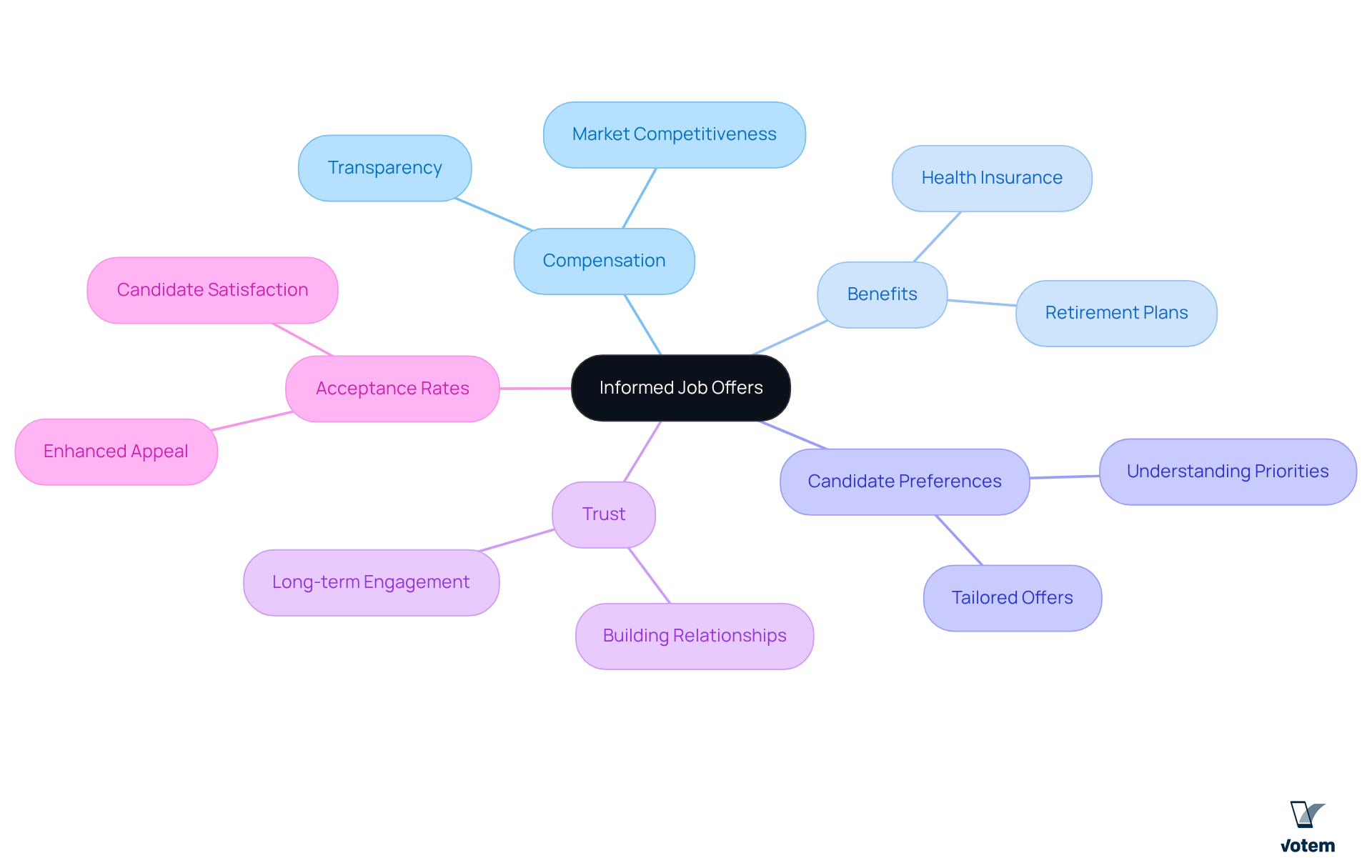
Develop Initial Mentoring Plans: Support New Candidates’ Integration
Establishing initial mentoring strategies is essential for facilitating the integration of new candidates into the organization. By pairing new hires with seasoned mentors, organizations can provide critical guidance, support, and valuable insights into their culture.
Furthermore, mentoring programs should be meticulously structured to encompass regular check-ins, goal-setting, and feedback sessions. This ensures that new employees not only feel supported but also actively engaged in their roles. Such an approach not only aids in their transition but also cultivates a profound sense of belonging within the organization.
In addition, by fostering these relationships, organizations can enhance retention rates and overall employee satisfaction, leading to a more cohesive workforce. As we consider the implementation of these strategies, it is imperative to recognize the positive impact they can have on both new hires and the organization as a whole.
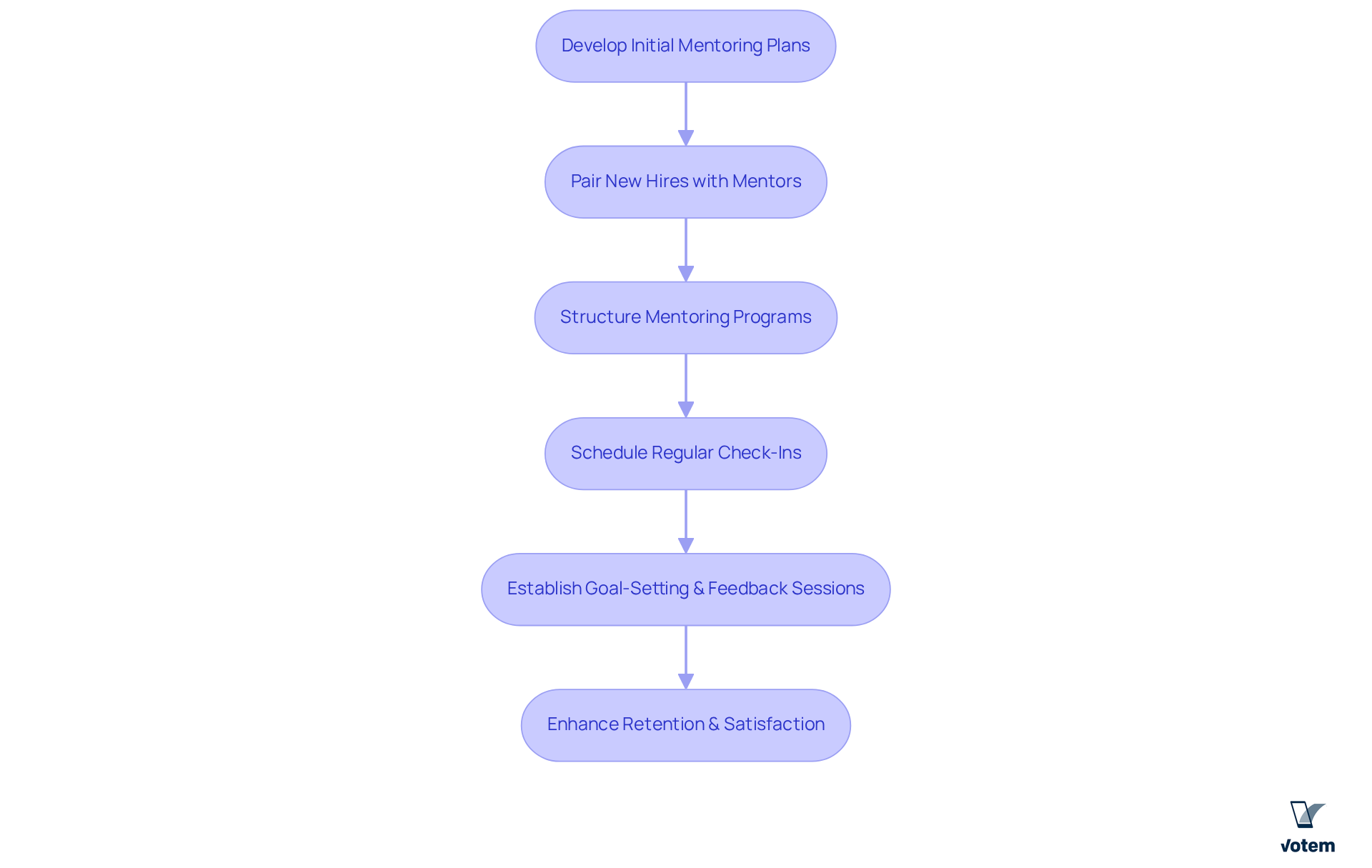
Implement Ongoing Evaluation: Enhance Future Recruitment Strategies
Implementing ongoing assessment of hiring strategies is essential for improving the process of recruiting and nominating candidates in future recruitment efforts. Organizations must regularly evaluate their processes for recruiting and nominating candidates, including sourcing, selection criteria, and engagement activities. This proactive approach not only identifies inefficiencies but also sets the stage for continuous improvement.
Gathering opinions from applicants and hiring managers provides valuable insights into the effectiveness of these strategies. By analyzing this data, organizations can pinpoint areas for enhancement and adapt their practices to better meet the needs of both candidates and the organization. Furthermore, this iterative process fosters a culture of responsiveness and adaptability, which is crucial in today’s competitive landscape.
In conclusion, the commitment to ongoing assessment and adaptation of hiring strategies, particularly in recruiting and nominating candidates, is not merely beneficial; it is imperative for organizations seeking to attract and retain top talent. By embracing this approach, they position themselves to meet the evolving demands of the workforce and ensure alignment with organizational goals.
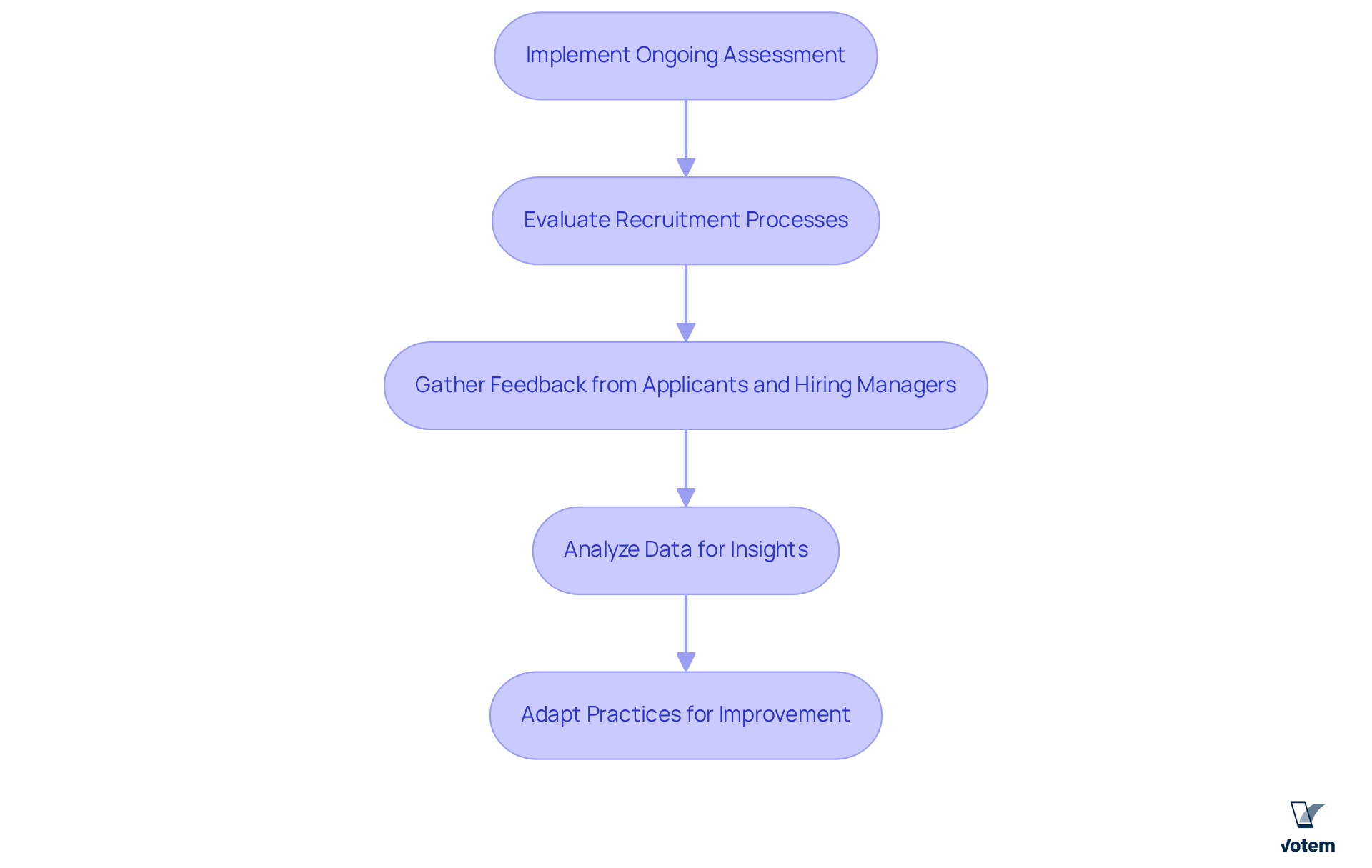
Conclusion
Embracing effective strategies for recruiting and nominating candidates is essential for organizations aiming to enhance their talent acquisition processes. By implementing a structured approach that prioritizes transparency, inclusivity, and ongoing evaluation, organizations can attract a diverse candidate pool while ensuring that every candidate feels valued and engaged throughout the recruitment journey.
Key insights from this article underscore the necessity of utilizing tools like Votem for secure online voting, defining clear position descriptions to set expectations, and assembling diverse search committees to enrich the evaluation process. Furthermore, fostering candidate engagement through thoughtful activities and making informed offers can significantly improve the experience for potential hires, ultimately leading to better retention and satisfaction.
In light of these strategies, organizations are encouraged to take proactive steps in refining their recruitment processes. By continuously assessing and adapting their approaches, they can stay aligned with the evolving workforce landscape and meet the needs of both candidates and the organization. The commitment to fostering an inclusive and transparent recruitment environment not only enhances the hiring experience but also positions organizations as leaders in attracting top talent.
Frequently Asked Questions
What is Votem and how does it improve candidate recruitment?
Votem is a secure online voting solution provided by the CastIron platform that enhances the process of recruiting and nominating candidates by enabling remote and secure voting for stakeholders. This increases participation and transparency, especially beneficial for unions and associations.
Why is secure online voting important for organizations?
Secure online voting is important because it fosters trust among participants, ensures the voting system is legally valid, and adheres to regulations, thus enhancing the overall integrity of the candidate recruitment process.
How does Votem increase voter participation?
Votem increases voter participation by allowing members to cast their votes effortlessly from any location, simplifying the enrollment process and promoting inclusivity in the democratic process.
What are the key elements of a clear position description in recruitment?
Key elements of a clear position description include the job title, summary, essential duties, and qualifications necessary for the role. This clarity helps attract suitable applicants and sets performance expectations.
Why is it important to regularly update position descriptions?
Regularly updating position descriptions ensures they reflect current organizational needs and market conditions, making them more effective in attracting top talent.
What is the benefit of assembling a diverse search committee?
Assembling a diverse search committee enhances representation and understanding during recruitment, allowing for better evaluation of applicants and informed decision-making. It also signals the organization’s commitment to inclusivity and equity.
How can organizations cultivate a diverse search committee?
Organizations can cultivate a diverse search committee by including members from various departments, levels of experience, and demographic backgrounds, thereby enriching the selection process and attracting a broader pool of talent.
List of Sources
- Develop a Broad Candidate Pool: Attract Diverse Talent for Nominations
- Social Media for Recruiters, Get Better Results in 2025 | Vouch (https://vouchfor.com/blog/social-media-for-recruiters)
- 100+ Recruitment Statistics Every HR Should Know in 2025 – SSR (https://selectsoftwarereviews.com/blog/recruiting-statistics)
- Top 60+ Recruitment Statistics to Enhance Hiring in 2025 (https://skima.ai/blog/industry-trends-and-insights/recruitment-statistics)
- Establish Evaluation Criteria: Ensure Objective Candidate Assessment
- Evaluating Candidates After An Interview (Scoring System) (https://agencefirstround.com/hiring/evaluating-candidates)
- Decoding Success: The Ultimate Interview Scorecard Template | Claap (https://claap.io/blog/interview-scorecard-template)
- The pros & cons of interview scorecards (https://resources.workable.com/stories-and-insights/interview-scorecards)
- Interview Scoring Sheet Guide (With Template) (https://indeed.com/hire/c/info/scoring-sheet)

